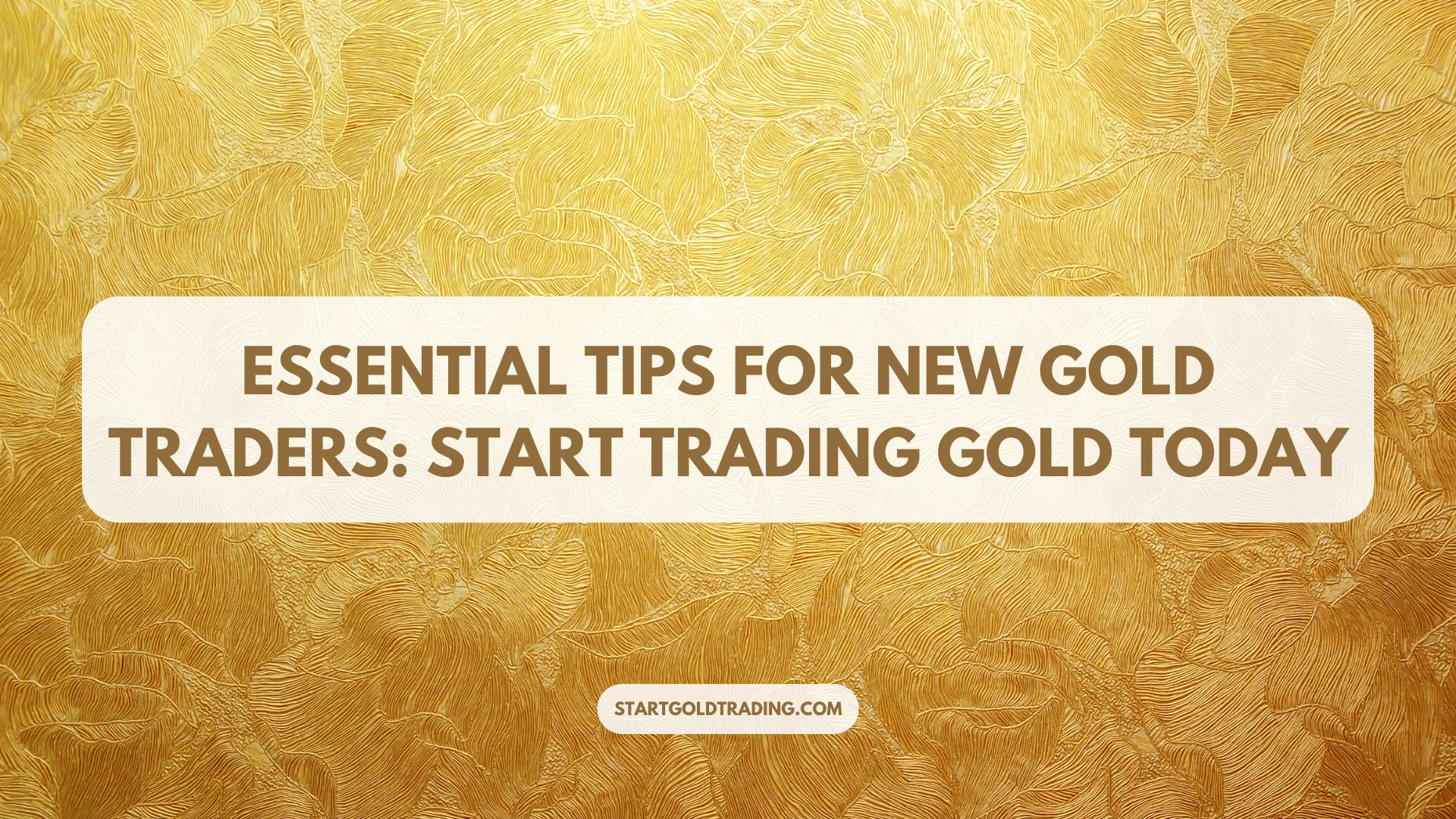Gold trading offers exciting opportunities, but like any investment, it comes with risks. Whether you’re looking to hedge against inflation, diversify your portfolio, or trade gold for short-term profits, understanding market dynamics and developing strong trading habits is essential.
This guide provides key insights into market analysis techniques, risk management strategies, and continuous learning to help new gold traders start with confidence.
1. Market Analysis Techniques: Understanding Gold Trading
Successful gold trading relies on a combination of technical and fundamental analysis to make informed decisions. Here’s how each method works:
🔹 Technical Analysis for Gold Trading
Technical analysis involves studying price charts, patterns, and indicators to predict future price movements. Some essential tools for gold traders include:
✅ Moving Averages – Identify trends by smoothing price fluctuations over time.
✅ Relative Strength Index (RSI) – Helps determine whether gold is overbought or oversold.
✅ Bollinger Bands – Measures market volatility and potential breakout points.
✅ Fibonacci Retracement – Identifies possible support and resistance levels.
✅ MACD (Moving Average Convergence Divergence) – Detects trend reversals and momentum shifts.
📌 Pro Tip: Combine multiple indicators to confirm trading signals and reduce false alarms.
🔹 Fundamental Analysis for Gold Trading
Fundamental analysis focuses on macroeconomic and political factors that influence gold prices. Key elements include:
📊 Economic Indicators – Gold reacts to inflation, interest rates, and employment reports.
💲 US Dollar Strength – Since gold is priced in USD, a weaker dollar generally drives gold prices higher.
🏦 Central Bank Policies – Changes in gold reserves and monetary policies impact market sentiment.
🌍 Geopolitical Events – Wars, political instability, and crises often push investors toward gold as a safe haven.
📌 Pro Tip: Use an economic calendar to track key events that might impact gold prices.
2. Risk Management Strategies: Protecting Your Capital
Gold is a volatile asset, meaning prices can fluctuate significantly in short periods. Without proper risk management, even a well-placed trade can lead to losses. Here’s how to protect your capital:
🔹 Set a Stop-Loss on Every Trade
A stop-loss order automatically closes a trade when the price reaches a predetermined level, preventing excessive losses.
📍 Example: If you buy gold at $2,000 per ounce, you might set a stop-loss at $1,980 to limit potential losses.
📌 Pro Tip: Use the Average True Range (ATR) indicator to determine a reasonable stop-loss level based on gold’s volatility.
🔹 Manage Trade Size and Leverage Wisely
Many brokers offer leverage, allowing traders to control larger positions with a smaller investment. However, excessive leverage increases risk.
📍 Example: With 10:1 leverage, a $1,000 deposit controls $10,000 worth of gold. While potential profits increase, losses are also magnified.
📌 Pro Tip: Never risk more than 1-2% of your total trading capital on a single trade.
🔹 Diversify Your Trades
Instead of relying solely on gold, consider trading other precious metals (silver, platinum) or currency pairs linked to gold (USD, AUD, CHF) to balance risk.
📌 Pro Tip: Track correlations – gold often moves opposite to the US dollar but aligns with inflation-linked assets.
3. Continuous Learning and Improvement: Staying Ahead in the Gold Market
Gold trading is constantly evolving, and staying updated with market trends can enhance long-term success.
🔹 Stay Informed with Market News
Gold prices react quickly to economic reports, central bank announcements, and geopolitical events. Follow trusted financial news sources such as:
📰 Bloomberg
📊 Investing.com
💡 Kitco Gold News
📈 Forex Factory (for economic calendars)
📌 Pro Tip: Set up price alerts on your trading platform to stay updated on significant market moves.
🔹 Review Your Trades and Adjust Your Strategy
Keeping a trading journal helps identify patterns and mistakes, improving decision-making over time.
✅ Log each trade – Entry/exit points, profit/loss, reason for trade.
✅ Analyze mistakes – Learn from losing trades to refine strategies.
✅ Identify strengths – Focus on what works and scale successful strategies.
📌 Pro Tip: Use demo accounts to test strategies before applying them to real trades.
🔹 Join Trading Communities and Learn from Experts
Engaging with other traders can provide valuable insights, new strategies, and market discussions.
💬 Reddit (r/GoldTrading, r/Forex)
📌 TradingView Public Chats
📺 YouTube Gold Trading Tutorials
👥 Telegram & Discord Trading Groups
📌 Pro Tip: Follow experienced traders and participate in discussions to stay ahead.
Final Thoughts: Start Trading Gold with Confidence
Gold trading can be a rewarding experience, but success requires a solid understanding of market analysis, risk management, and continuous learning.
✅ Key Takeaways:
✔ Use technical and fundamental analysis to make informed trading decisions.
✔ Implement stop-loss orders and manage leverage to protect your capital.
✔ Stay updated with market news and continuously refine your strategy for long-term success.
By following these essential tips, you’ll be well-equipped to navigate the gold market confidently. Start with a demo account, apply these strategies, and gradually build your skills. 🚀
👉 Ready to start trading gold? Open a trading account today and put your knowledge to work!

